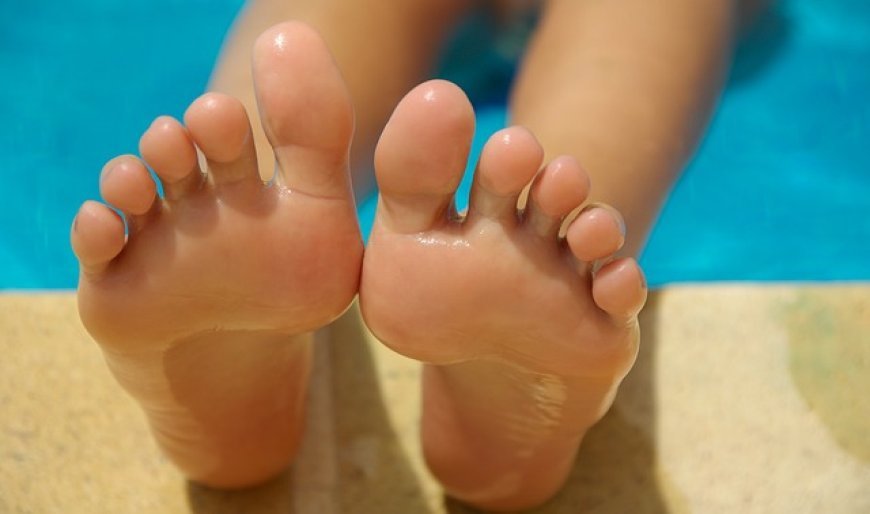How can you keep your feet in good condition? Common conditions & Recommended Foods
The feet are parts that the body uses to carry out activities such as walking, running, jogging, or standing. Each of your feet is divided into
into three parts.. That is, the forefoot, the midfoot, and hindfoot.
The forefoot is made up of the toes only.
The mid foot is made up of the bridge and arch.
The hind foot is made up of the arch.
CONDITIONS AND DISEASES THAT CAN AFFECT YOUR FEET
Because the feet are most of the times in motion, they are bound to become vulnerable to diseases or infections in one way or another. These include:
Fungal Nail Infection
In this condition, the nails of the feet become discolored, brittle, and also grow thicker. This condition is caused by fungi. The fungi that causes this condition also has the ability to survive in either warm or cool conditions.
Bunions
This is a condition in which the bones in the big toes grow bigger and outwards, hence making your feet grow bigger in size. Bunions may be painful or you may not experience any pain at all.
Corns and Calluses
Corns are a condition in which the skin found on the bottom of the feet tears up creating spaces which are then filled by bacteria or fungi. Corns usually occur along the perimeter of the feet. Calluses are a condition in which the skin on the bottom of the feet becomes rough. Both corns and calluses are usually caused by friction between dirty or rough surfaces and your feet: ill-fitting shoes. Calluses can occur on any part of the feet.
Gout
This is a condition in which the skin of the feet turns red, swells, and stiffens. Gouts are also painful. It usually occurs in the big toes, but can also spread throughout your foot. Characteristics such as redness, swelling, and stiffening are caused by too much uric acid in the body. The uric acid may be a result of drinking or eating too much.
Plantar warts
Plantar warts are swellings caused by a virus infection in the top layer of the skin. They are caused by human papilloma virus (HPV). They are very common in children. They are usually harmless, but you can feel some pain depending on where the infection takes place.
Athlete's Foot
Athlete's foot is a foot disease or infection caused by fungi. It is characterized by broken skin in between the toes that with time develops into sores, pain due to broken skin or sores, and peeling skin. Athlete's foot is contagious, therefore, it can spread from one person to another, if you interact or share the same facilities with a person who is infected. For example, swimming pools, pedicure equipment, saunas and so on. If you share amenities such as towels, socks, or shoes, you are also at a high risk of getting infected or contracting athlete's foot.
Other conditions and diseases include hammertoe, ingrown toenails, and flat feet.
How to care for your feet
You can care for your by practising good hygiene and having a healthy nutrition.
A good nutrition can help to ensure that your feet remain strong enough to fight against disease causing germs and also remain healthy. Foods rich in proteins; Vitamin A, B and C; Omega-3 fats can go along way in helping your feet repair worn out tissues, improve and maintain the immune system, and reduce inflammation. Such foods include lean meat; vegetables such as broccoli; fruits such as oranges, strawberries, apples, and yellow bananas; foods such as sweet potatoes, cantaloupe; fish like tuna, salmon; dairy products such as milk, yogurt, and cheese.
It is advisable to regulate how you consume salt and salt rich foods, margarines, liquor, and foods rich in refined sugars.

Good foot hygiene includes wearing good quality shoes that fit perfectly, drying your feet after every shower or washing them,.
Exercising can help prevent contracting or suffering from a number of diseases such as gout and plantar warts.
Making use of protective gear such as glooves, if you earn a living by executing blue collar jobs, for example, in the construction industry, compound designers and so on.
Sources
Englishan[Online].Parts of Foot Names in English. December 28,2023. Accessed 21st November, 2024.
Tim Wall, MS, ATC. The Foot Anatomy. Jacksonville Orthopaedic institute [Online]. Accessed 21st November, 2024
Carmelita Swiner, MD.Slideshow: Pictures of Common Foot Problems. February 13, 2023. WebMD [Online]. Accessed 21st November, 2024
Upperline[Online]. How Nutrition Can Affect Your Feet. Village Podiatry. Accessed 21st November, 2024.
Melissa Parietti. Blue -Collar Vs. White Collar Jobs: What's the Difference?. Investopedia[Online]. Datdosh Meredith. Accessed 21st November, 2024
What's Your Reaction?








